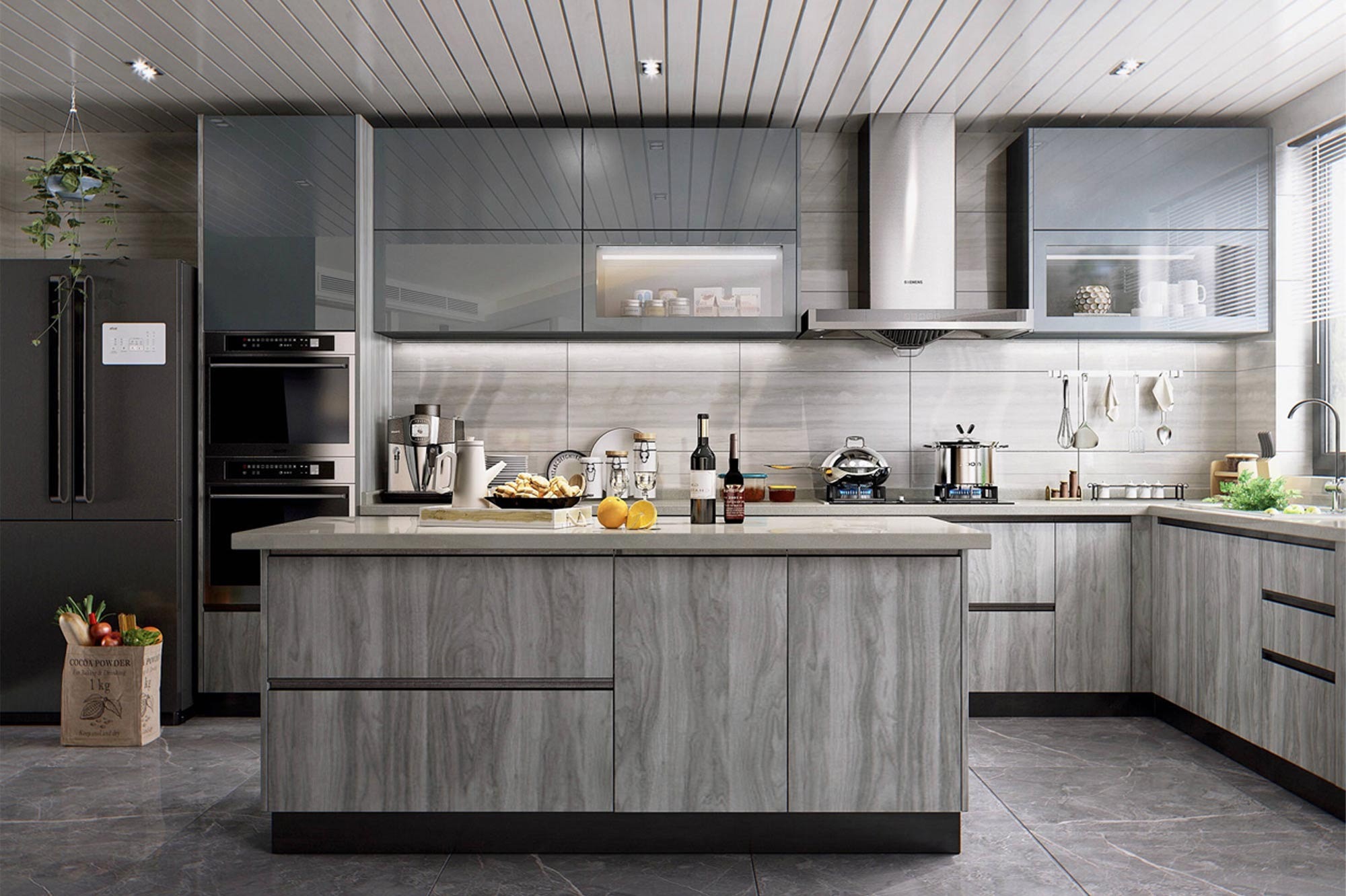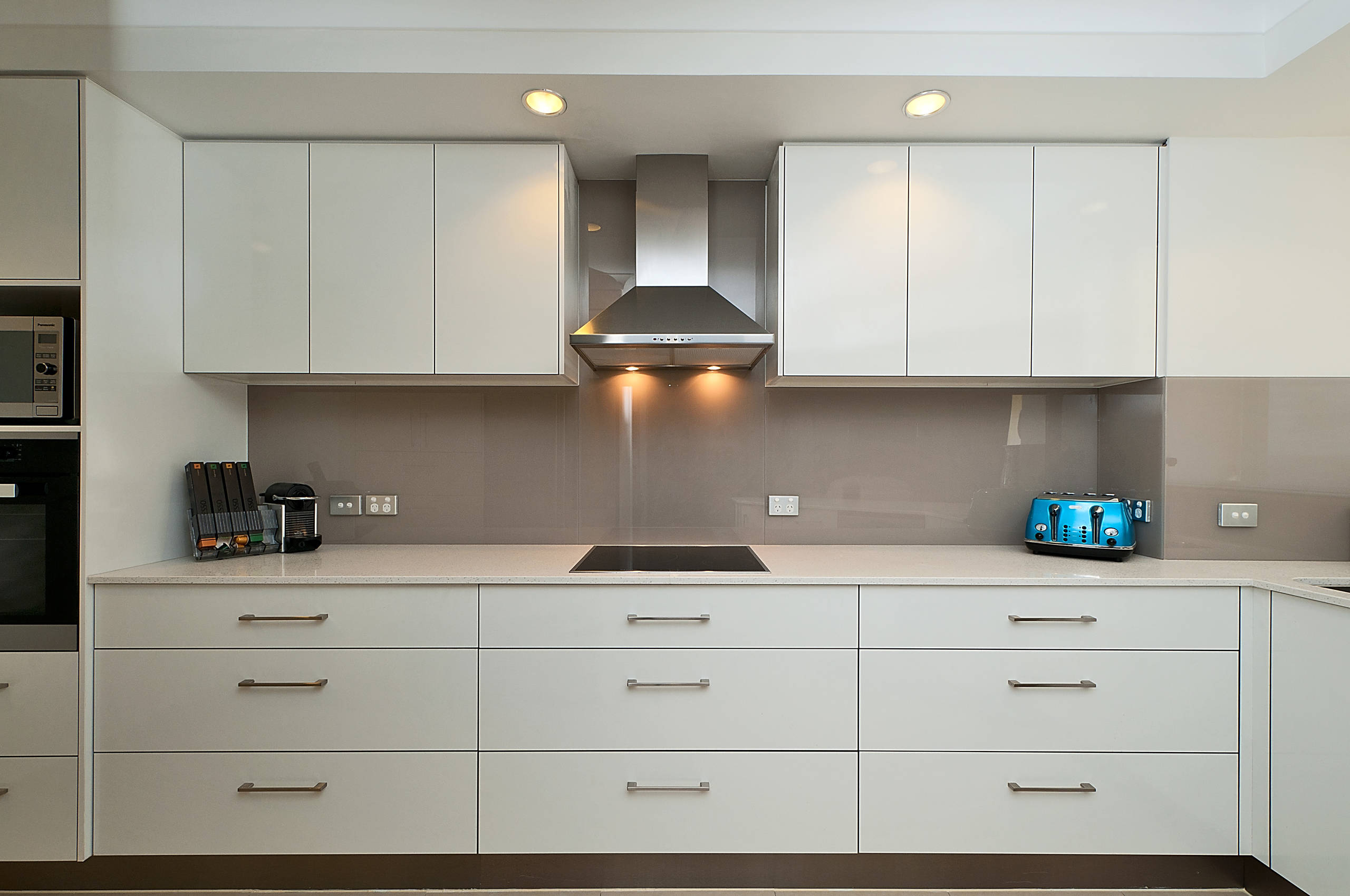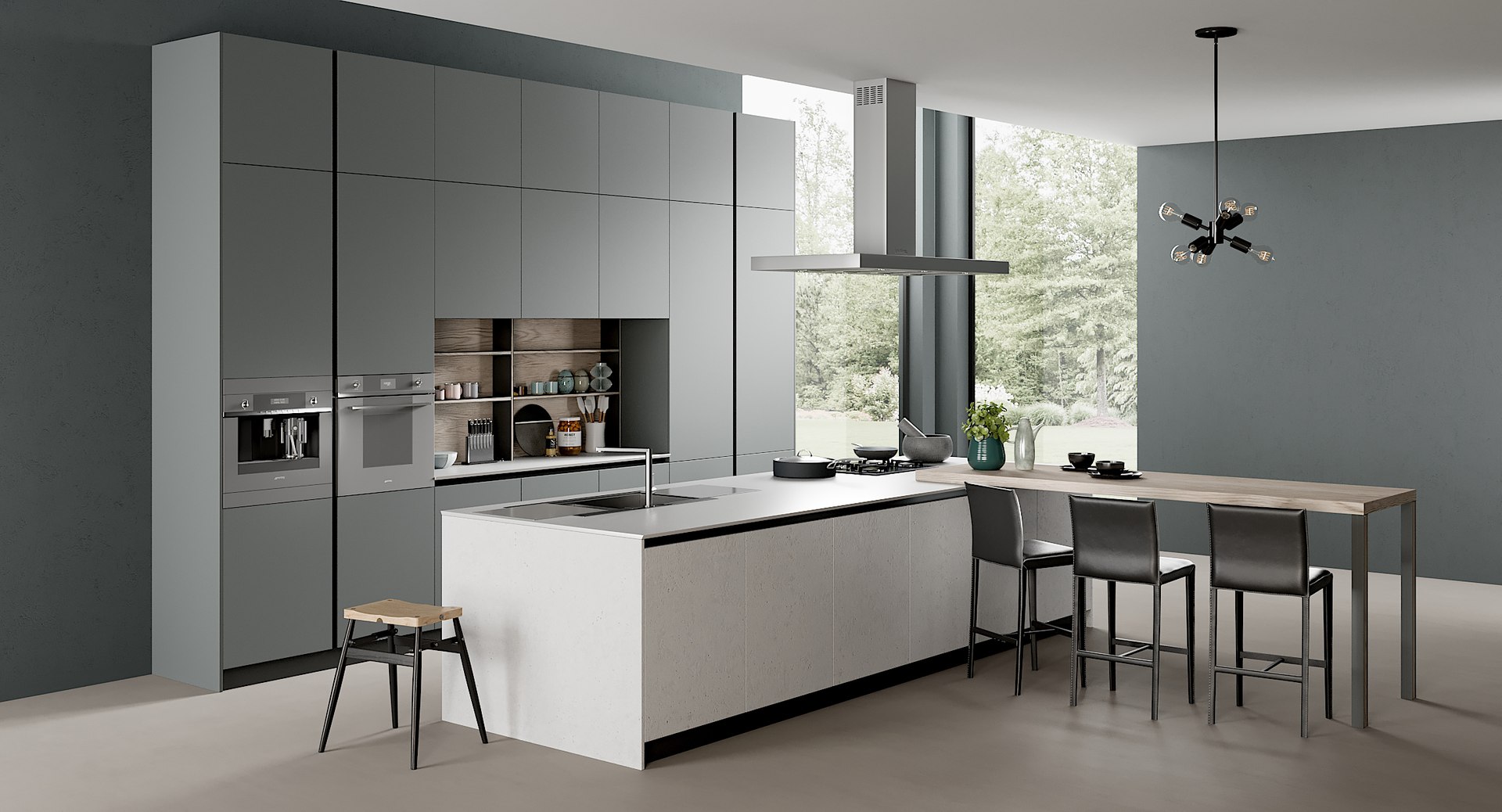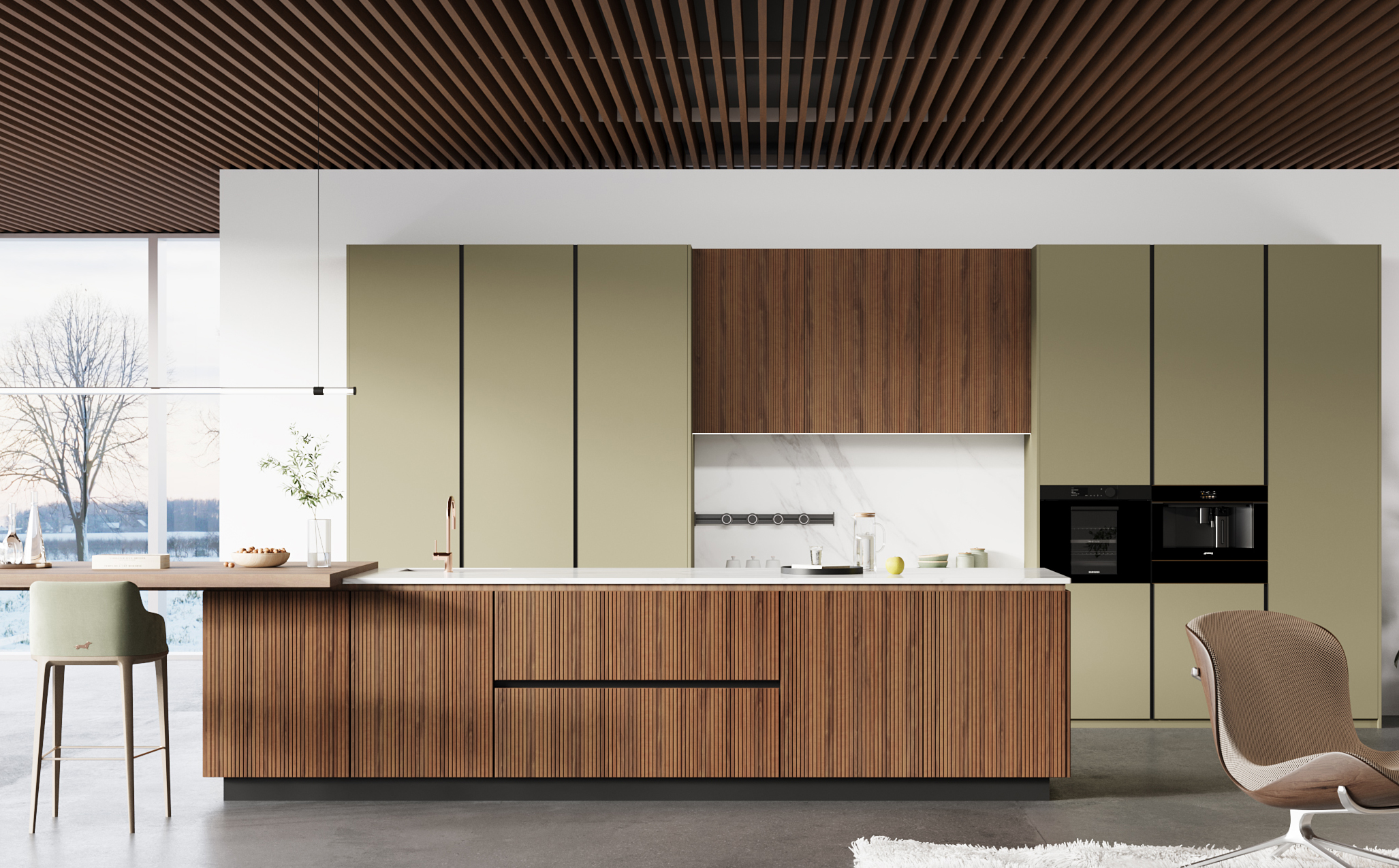Kitchen cabinets are the essence of both spatial aesthetics and storage practicality in contemporary home design. The material, structure, and color of the cabinets are undoubtedly important, but the finish often determines the final texture and grade of the cabinets.
The finish on custom kitchen cabinets not only affects the visual appearance, but it also directly influences durability, cleaning difficulty, and maintenance period. Selecting the appropriate finish type is an important step in balancing look and functionality.
Whether you are a kitchen designer, a cabinet dealer, or a partner from kitchen cabinets in China, understanding the characteristics and application scenarios of different finish types is an important prerequisite for optimizing product quality and customer experience.
Why the Finish Matters
The finish of kitchen cabinets acts as the “outer garment” of furniture, influencing both aesthetics and determining its lifespan. A high-quality finish layer should fulfill several key functions:
Protective function: Resists moisture, grease, UV rays, and daily abrasions, extending the cabinet's service life.
Visual presentation: The finish dictates the cabinet's color saturation, gloss level, and surface texture, directly shaping the spatial style.
Ease of Cleaning: Different finishes vary significantly in cleaning methods and stain resistance. For instance, high-gloss surfaces suit contemporary kitchens, while matte finishes resist fingerprints better.
Style Definition: The finish is pivotal in achieving either modern kitchen cabinets or traditional aesthetics.
Therefore, selecting cabinet finishes involves not merely design considerations but a comprehensive assessment of materials and usage scenarios.
6 Best Finishes for Kitchen Cabinets
Choosing the right surface treatment for the cabinets is a crucial step in determining the appearance and lifespan of the kitchen. Here are 6 popular surface finishing techniques that will be in vogue in 2026 and are suitable for various project types.
1. Lacquered Finish
The lacquered finish stands as one of the most classic and expressive treatments for cabinet surfaces. Through multiple layers of spraying and high-temperature curing, the lacquered surface achieves a uniformly smooth texture, capable of creating a distinctly modern kitchen ambience.
Features and Advantages:
Extremely wide color selection, perfectly complementing diverse kitchen design styles.
Capable of achieving matte, semi-matte, or high-gloss finishes.
Smooth surface for easy cleaning.
Suitable for MDF, particleboard, or solid wood door panels.
Notice:
Highly demanding construction techniques require specialized equipment.
The surface is prone to developing minor scratches with prolonged use.

2. Laminated Finishes
Laminated finishes are the common choice in construction projects, offering both value for money and durability. By thermally bonding melamine film or fire-retardant laminate to the substrate surface, a decorative layer is formed that is scratch-resistant, moisture-proof, and easy to clean. Many kitchen cabinet manufacturers in China use laminated finishes for their custom kitchen cabinets, balancing quality and production efficiency.
Features and Advantages:
Scratch-resistant, heat-resistant, and stain-resistant.
Cost-effective, suitable for large-scale production.
Capable of simulating various textures such as wood grain, stone patterns, or matte metallic finishes.
Notice:
Although highly wear-resistant, the edges require precise finishing to prevent water seepage or warping.
3. PVC Finish
PVC film-pressed door panels have been the most popular alternative for PVC kitchen cabinets due to their low cost and outstanding moisture-proof qualities. This procedure, which involves vacuum molding or hot pressing, allows the PVC film to properly adhere to the surface of the door panels, resulting in a fully enclosed effect.
Features and Advantages:
Moisture-resistant and mold-proof, suitable for humid environments.
Smooth surface finish, available in various styles such as woodgrain, glossy, and satin.
Colorfast and low-maintenance.
Notice:
Not resistant to high temperatures. Be mindful of the distance from heat sources when placed near the oven or stove.
4. Acrylic Finish
Acrylic finishes, due to their high gloss and mirror-like reflective effect, are widely used in modern kitchens. Their visual texture is comparable to that of piano lacquer, but they are more durable and environmentally friendly.
Features and Advantages:
High gloss finish with intense reflective properties.
Resistant to fading and UV exposure.
Easy to clean and moisture-resistant.
Adds a premium visual impact to modern kitchen cabinets.
Notice:
The cost is high, and scratches must be prevented during transportation.
Fingerprints are easily visible, so it needs to be wiped regularly.
5. Wood Veneer Finish
The wood veneer technique involves adhering thin slices of natural wood to the surface of the base material, followed by sanding and painting processes to achieve a realistic wood grain texture. For clients who prefer timeless kitchen designs, wood veneer finishes bring natural warmth and sophistication to custom kitchen cabinets.
Features and Advantages:
Presents authentic wood grain and natural coloration.
Achieves diverse effects through staining or dyeing.
Environmentally friendly and repairable.
Notice:
The cost is high, and it requires strict control of humidity and proper maintenance.

6. Matte Finish
Matte finishes are increasingly popular in modern kitchen cabinets, offering an understated elegance that complements minimalist kitchen designs.
Features and Advantages:
Smooth to the touch with a non-reflective finish.
Resistant to fingerprint marks and easy to maintain.
Complements a wide range of color schemes.
Notice:
If cleaned improperly, minor scratches may develop over time.
How to Choose the Finish for Custom Kitchen Cabinets
Consider Project Positioning and Budget
Different project types require different materials and techniques. For high-end residences, showrooms, or custom apartments, users place greater emphasis on design and texture. Lacquered finishes or acrylic finishes can be chosen to highlight the high-end image. For commercial properties or rental apartments, PVC kitchen cabinets or laminated finishes are more cost-effective options.
Assessing the Kitchen Environment
The humidity, temperature, and frequency of usage within the kitchen considerably influence the compatibility of surface materials.
Where kitchens are frequently exposed to damp circumstances, such as in coastal towns or open-plan kitchens, opt for more moisture-resistant finishes like PVC or laminated surfaces.
For well-ventilated kitchens with lighter usage, higher-grade wood veneer or painted finishes may be employed.
Such detailed assessments are especially important in the manufacture and export of kitchen cabinets from China, where regional climate variations have a direct impact on cabinet longevity.
Maintain Consistency with The Overall Style
Different surface treatment methods will create completely different kitchen atmospheres.
If you prefer a modern minimalist style, you can choose a matte finish or an acrylic finish, which will seamlessly blend with the modern kitchen cabinet style.
If you prefer natural or classic designs, you can consider wood veneer or a lacquered finish, showcasing a warm texture.
In custom projects, it is recommended that the cabinet manufacturer, based on the overall design plan provided by the customer, including walls, floor tiles, and lighting, display the corresponding surface effects to achieve true visual consistency of custom kitchen cabinets.
Concentrate on Maintenance and Durability
High-gloss surfaces, such as lacquered or acrylic finishes, may appear spectacular, but they are more susceptible to fingerprints and minor scratches. Matte and PVC-like surfaces, on the other hand, are easier to keep clean and more resistant to stains and wear. If the project's primary goal is long-term use and simplicity of cleaning, laminated or matte finishes should be prioritized.
Conclusion
Choosing the right finish for custom kitchen cabinets means striking a balance between aesthetics and durability. Different finishes give kitchens distinct characteristics. Glossy lacquer brings a modern touch, and wood veneer conveys a natural vibe, while PVC and fireproof board excel in cost-effectiveness and durability.
In today's highly competitive cabinet market, brands that combine innovative craftsmanship with design concepts will stand out. As a professional manufacturer of kitchen cabinets in China, AIS Kitchen is dedicated to providing global customers with high-quality modern kitchen cabinet solutions, ensuring that every space is both functional and aesthetically pleasing.
FAQ
Q1: What is the difference between lacquered finishes and PVC finishes?
A: Lacquered finishes offer a more premium texture and pure colors, but they are more costly and susceptible to scratches and knocks. PVC finishes are moisture-resistant, durable, and offer excellent value for money, making them more suitable for standard residential homes and apartment projects.
Q2: Which finish is easiest to clean?
A: Laminate and PVC finishes are the simplest to maintain. Their surfaces resist oil absorption and can be cleaned with a damp cloth.
Q3: What if I desire a natural wood grain effect but have budget constraints?
A: Opt for solid wood veneer or PVC film finishes with high-fidelity wood grain patterns. These offer a natural aesthetic while remaining cost-effective.
Q4: Which finish suits modern kitchens best?
A: Contemporary kitchens typically favor high-gloss or matte lacquer, acrylic, or metallic spray finishes to accentuate clean lines and spatial texture.







